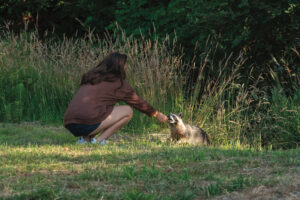I was driving my son to school in El Cerrito one morning in late January. There had been a rainstorm the night before and it was cold; I knew there might be snow at higher elevations, but I was completely unprepared for the sight of Mount Tam across the Bay as we crested a small rise. Lit by slanting early morning sunlight from the east, the whole mountain—usually a dark green silhouette—shimmered in a cloak of white, its base ringed by an ethereal thin collar of white fog. Mount Fuji-by-the-Bay. Even my teenage son was thoroughly impressed.
The storm came as a bracing punctuation to an already distinguished winter. December seemed like one long rainstorm, bringing us almost a “normal” year’s worth of rainfall in five weeks. I loved it, for its heedless insistence and abundant intensity. But by early January, I had had enough. I went for a hike on Mount Tam during the final episode of that stretch, and it felt as if water was coming out of every single pore of the mountain. Every depression was a puddle; every drainage a full-fledged creek;every branch a leaky faucet; every trail a bed of mud. Even my “waterproof” jacket had reached its saturation point.
Then the spigot shut off and the rest of January turned bone-dry, until that single storm at the end of the month that dusted all the Bay Area’s peaks with snow. February had no rain to speak of, ending with a stretch of days in the 70s, making the emphatic point that spring had sprung, damn the calendar. And then a dramatic thunder and lightning storm in early March to wipe the sky clear again.
What I love about all of this is the combination of subtle changes and emphatic extremes that make up a Bay Area winter. The sheer surprise of particular weather events is a reminder of great forces at work. Then comes the fascination at seeing how each year’s unique rhythm of wet and dry, warm and cold, overcast and clear plays out on the hillsides and creeks and plants and wildlife. Last year’s late rains left most coho stranded at the mouths of the creeks, waiting for that pulse of sediment and rainwater that didn’t come until they had exhausted their food reserves.This year, the early drenching brought the best salmon run in recent memory, plenty of mushrooms, and the promise of a spectacular season of flowers. A hike on the north side of Mount Diablo in early March featured western hound’s tongue emerging in a deeper purple-blue than I’d ever seen. I mumbled to myself that is was too early for baby blue-eyes, but then I rounded a corner, and there they were, a small carpet of them.
So, rain or shine, now is a great time to get out there and see how you can read the winter weather on the spring landscape. Because it will only happen exactly this way once, and you wouldn’t want to miss it.




